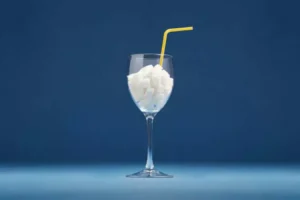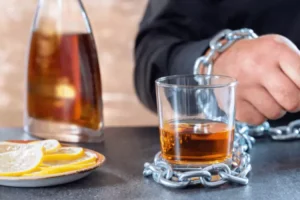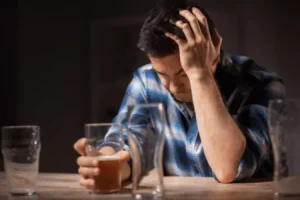
The term “alcoholic nose” has an interesting history and an even more interesting scientific explanation. If you’re struggling with alcohol abuse, it’s not too late to get help. There are many effective treatments for alcohol addiction, and Zinnia Health can give you the support you need to overcome your addiction and start living a healthier life.
Mixing Adderall and Alcohol: Risks and Precautions

Moreover, certain types of alcohol, like red wine, are more likely to trigger rosacea than others. If caught in the early stages, however, symptoms can often be managed with medication and lifestyle changes. Surgical therapy, along with topical treatments, are incredibly effective for helping return the nose to its original shape without harming the bone and cartilage structures. With surgical treatments, care must be taken to avoid disturbing cartilage while leaving enough skin to ensure proper healing with minimal scarring. Pamela was successfully treated first with Ultherapy and a debulking procedure, along with a CO2 resurfacing with laser surgery. Her long-term treatment plan then included a prescription for Accutane.
Topical Treatments
It has also been referred to in the past as gin blossom, rum nose, potato nose, or toros nose. For starters, communicate with close friends and family about your situation. Entrust your addiction with people who love and care about you and want to see you happy. Tell them about your struggles and how your alcoholism is agitating your rosacea. However, it is very important to note that rosacea and rhinophyma can be agitated by things other than alcohol.

Understanding Rosacea and Alcohol Consumption
One study found that out of 108 patients with rosacea, only 15 were noted to also have rhinophyma, almost all of whom were men. While alcohol can stay in your system and cause damage, there is thought to be very little connection between alcohol use and this skin condition. Join 40,000+ People Who Receive Our Newsletter Get valuable resources alcoholic nose on addiction, recovery, wellness, and our treatments delivered directly to your inbox. Inpatient treatment may be necessary if you cannot stop drinking on your own. Medication can also be used to help manage withdrawal symptoms and cravings. Identifying and avoiding personal triggers is crucial in managing rosacea and preventing rhinophyma.
Preventing Skin Conditions Like Rhinophyma
The condition may also produce problems with a person’s eyes and eyelids as well as vision problems. These symptoms are likely to occur on the bridge of the nose and the cheeks. While it primarily affects the nasal area of Caucasian men between the ages of 50 and 70, people of all ages and skin tones can have the condition. As rosacea advances, rhinophyma emerges with characteristic signs like an enlarged nasal tip and a bumpy or ridged texture on the face. Another option is isotretinoin, a drug that shrinks the sebaceous glands, limiting how much oil they make. However, if a person wishes to have surgery, they must stop taking this medication.
Consistent Skincare Routine
Obviously, this can decrease a person’s quality of life and be a hindrance to daily life and chores. Aside from physical repercussions, those who deal with rhinophyma can also face prejudice for their physical appearance. The Mayo Clinic reports that over a long period of time, rosacea can thicken the skin of the nose. This thickening of the nose causes it to become more bulbous, which is the condition you now know as rhinophyma.
How Rosacea And Alcohol Abuse Lead To Drinker’s Nose
- You already have an allergic reaction to the peanuts, but by adding more peanuts, you are adding a bigger reaction and agitating the reaction more, making it worse.
- These will include individual and group therapy, in addition to regular, personal meetings with your treatment team to discuss both successes and barrier to recovery.
- With time, alcohol abuse can worsen rosacea and contribute to the development of rhinophyma (alcoholic nose).
- An alcoholic nose or a “whiskey nose” is a slang term used to describe a red nose or bumpy nose considered to be caused by excessive alcohol consumption.
- As the condition progresses, the skin on the nose becomes thicker and more fibrous.
It is an extreme side effect only experienced by a small percentage of people who suffer from rosacea. That being said, someone who already has rhinophyma may find their condition https://ecosoberhouse.com/ is worsened by drinking alcohol. “Alcoholic nose,” or drinker’s nose, is a skin condition commonly identified by a red, bumpy, or swollen appearance of the nose and cheeks.
Rhinophyma exacerbated by heavy drinking can cause the cartilage cells to swell, resulting in a bulbous or “flared” appearance. So while drinking alcohol may not make your nose physically bigger, it can play a role in altering its appearance. While the primary symptom is the noticeable enlargement and redness of the nose, some individuals may also experience tenderness, oiliness, and visible blood vessels on the nose. In severe cases, the enlarged tissue can even obstruct the nasal passages, causing breathing difficulties.

Alcoholic nose, or drinker’s nose, is an informal term that refers to an enlarged purple nose that is thought to be caused by chronic alcohol abuse. Learn more about drinker’s nose and if drinking alcohol can affect the features of the face. While several of these terms are related to drinking alcohol, the reality is that alcohol abuse is not considered a cause of rhinophyma. Rather, drinker’s nose is actually a condition stemming from rosacea, a chronic skin disorder that causes visibly red or swollen skin and sometimes bumps or acne-like conditions.
Drinker’s Nose: Is “Alcoholic Nose” Really From Drinking?

If you develop rhinophyma, your nose may appear red, large, and even bumpy or bulbous. The visual side effects are most obvious on the tip and lower part of the nose, since the actual bone structure is not affected by the condition. This means that in someone who already has rosacea, heavy drinking may cause the rosacea to become more severe and they may then develop symptoms like rhinophyma. There are many different surgical options that use plastic surgery techniques. Drinking can increase the effects of existing rosacea and may increase the risk of this condition developing. However, many people who use alcohol heavily do not develop rosacea, and rosacea does often occur in people who do not drink alcohol or only use it in moderation.

